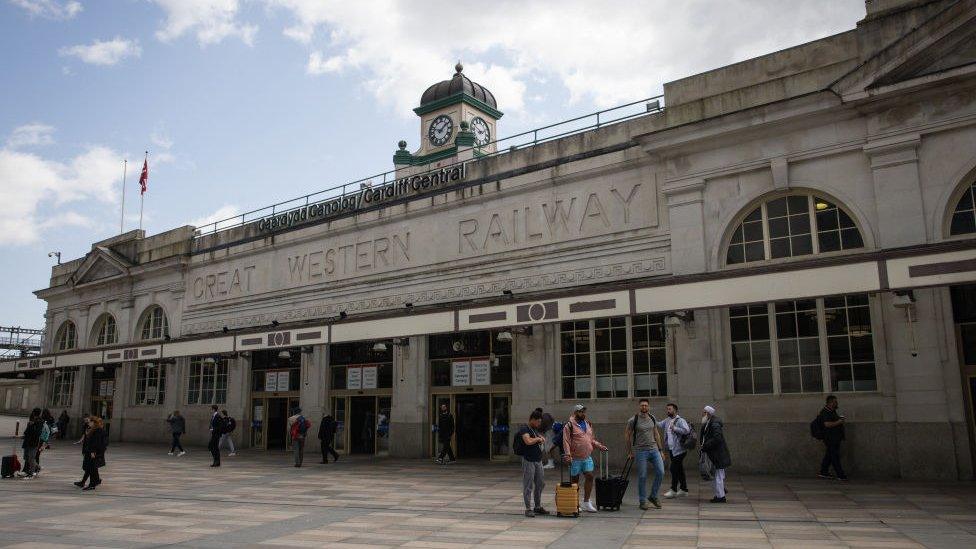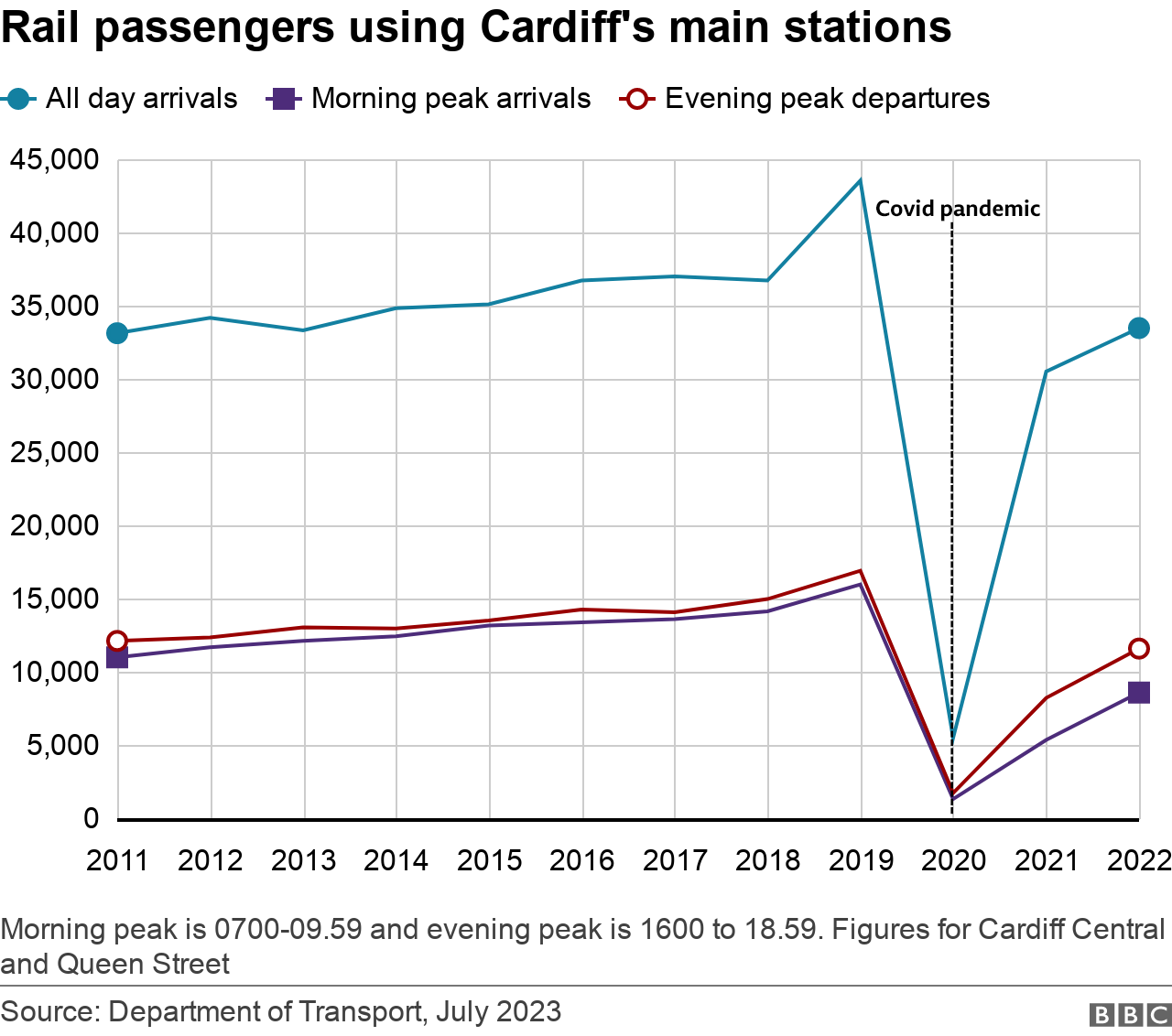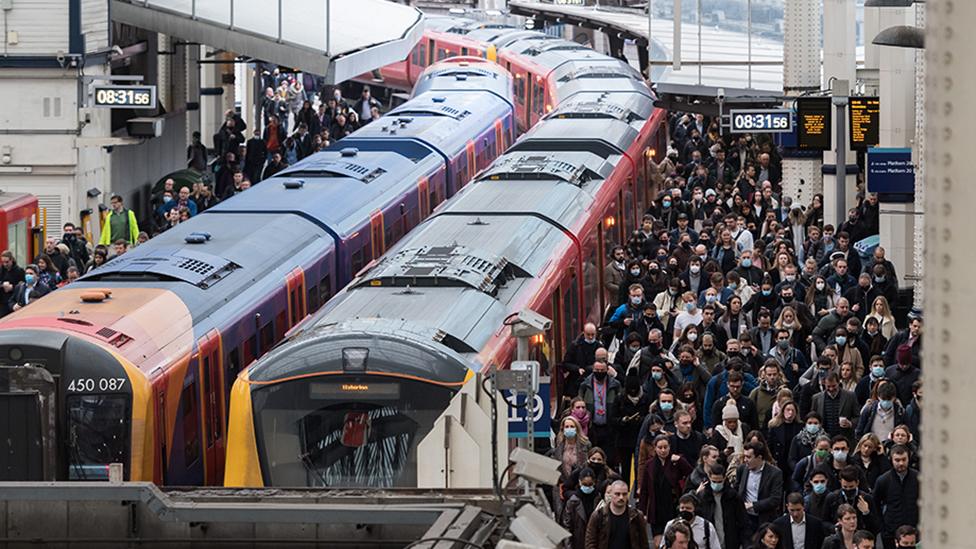Rail passengers into Cardiff rise but behind 2019 level
- Published

Cardiff Central dealt with nearly 7.5m passengers and Queen Street nearly 1.4m passengers coming in and out of the stations in 2021-22
Rail passengers coming through Cardiff were still only three quarters of the numbers seen before the Covid pandemic last year.
Numbers using the main Cardiff Central and Queen Street stations rose 9.7% in the autumn of 2022, compared to the same period in 2021, Department for Transport (DfT) figures show. , external
There were 33,471 passengers arriving in the Welsh capital on a typical day.
But this compares to 43,500 in 2019 - before the pandemic.

Morning commuting into Cardiff's two main stations saw a sharp rise, but still lags behind 2019 levels.
The typical morning peak saw just over 8,500 passengers arriving on a typical day in Cardiff - a 60% rise on 2021.
This is still below 2019 levels - 46% down on the numbers we were seeing then
Only 26% of daily arrivals into Cardiff now happen during the morning peak, compared to 37% before the pandemic, suggesting patterns to commuting and working in the city have changed.
Evening commuting saw those leaving Cardiff's two main stations rising 40% on 2021 levels.
Overall, counting the evening peak, crowding on trains had risen slightly in Wales, with 3.5% of passengers estimated to be standing. The proportion is higher in London and cities like Nottingham, Leicester and Birmingham.

The annual figures from the DfT look at typical autumn days at stations across major cities in England and Wales.
Cardiff Central is Wales' busiest station, while Queen Street is the fourth busiest. Together they are responsible for 30% of rail passengers on the network in Wales.
Outside London, passenger arrivals in major cities rose 45% across a typical day compared to 2021.
But they are still down on before the pandemic, although cities like Newcastle and Bristol have recovered better.
Seat capacity on trains in Wales was also back to 2019 levels.
Last week, Transport for Wales (TfW) chief executive James Price told MPs that running old timetables "just isn't working" with people working from home and commuting at weekends.
Train operators were asked by the DfT to explain the background to the figures, which for many included a period of industrial action.
TfW told the DfT that there had been "challenges" to overall performance.
"Challenges began to appear in rail performance and capacity offered with delivery and maintenance of both legacy and new rolling stock," it said.
"This included greater reliance on train crew for the transition and delivery of timetable, alongside experiencing a higher level of absence compared to three years ago, as did most industries."
Separate recent figures from the Office of Rail and Road show compensation claims over delays to TfW more than doubled in 2022-23, to 112,346.
Overall passenger numbers across TfW's network were 5.4m between January and March 2023, up 15% on the same period in 2022. But this was still 21% down on January to March 2020.
Despite this, TfW said its revenue figures were now equal to pre-pandemic levels.
"The reason for this is because since the pandemic travel patterns have changed and more people are using our rail services for longer journeys," said a spokesperson.

HOW TO FIX A RAILWAY: Wales' transport transformation, from boardroom to platform
TRUCKERS: Life on the road with Wales' HGV drivers

- Published24 November 2022

- Published19 July 2023

- Published20 April 2023
